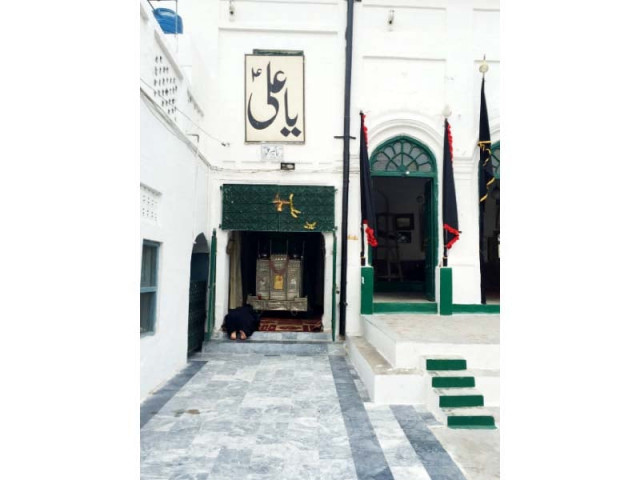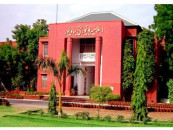Shah Shuja and Jafer Jinn
‘Local economy and festive traditions have been dealt a blow because of the government’s failure to enforce law’

‘Local economy and festive traditions have been dealt a blow because
of the government’s failure to enforce law’.
Before the Black Hawk was down, there was Macnaghten, who was dragged in the streets by a lynch mob. This was not in Mogadishu but in Kabul, not in the last century but in the one before. In 1841 when the people of Kabul rose up against the occupying forces and made them flee the country in disarray. They were ambushed in the narrow mountain passes on the road to Jalalabad and the whole army was wiped out, except an assistant surgeon who survived because of his reading habits. He was carrying the popular Blackwood’s Magazine stuffed inside his hat, to protect him from the bitter cold. It shielded him from a sword strike and thus saved his life.
In 1809, the wali of Kabul, Shah Shuja, was deposed by his half brother. He came to live in Mubarak Haveli, inside Mochi Gate, between 1813-15. He was a royal guest in name but actually a political prisoner of the mighty king, Maharaja Ranjit Singh. The haveli was surrounded by a cordon of troops and the essential supplies of food were cut off to persuade the unyielding Shah to surrender the fabled Koh-i-Noor diamond. The siege continued for three days. The Shah blinked first and intimated the Maharaja that he was ready to part with his most precious possession. The diamond was removed from an emerald socket and put in a gold frame. The Maharaja came down and received the offering in person. The story goes that he asked Shah Shuja about the price of the diamond. He is said to have replied that the price is equal to a baton. Whoever has the power to wield the baton, will be the one to own the diamond.
If the Shah thought that his troubles were over, he was mistaken. The wily Maharaja came to know that the Shah had other precious jewels and was selling them from time to time. The cordon sanitare around the haveli was reimposed. The Shah realised that his prospects were grim. On a dark night, he broke out through a hatch, effected in the rear wall of the haveli. He tried to leave through the Mochi Gate, but it was being guarded by a posse of troops. He came to the Shah Alami Gate where again he found impregnable security. Eventually he had to dive into the sewer draining below the city wall near the Lohari gate and made good his escape. He went to the Data Darbar, and washed himself in the ablution pond.
Beyond the realm of the Punjab, beyond the River Sutlej, lay the Empire on which the sun never set. The East India Company ruled from Calcutta and its inexorable march was heading towards the north west frontier. For Shuja, Ludhiana would be the obvious place of refuge and safety. He figured that this would be obvious to his tormentors as well. So, rather than going east, he headed west. He swam across the Ravi and then passing through Gujranwala, Sialkot and Jammu, ended up in Kishtwar.
It would not be too far off the mark to say that Shah had a roving eye, considering that he had a harem of six hundred women who were ensconced in Ludhiana under the auspices of the Company. This did not stop him from marrying the daughter of the Raja of Kishtwar and starting a brief and disastrous campaign to conquer Kashmir. Eventually, he did end up in Ludhiana, under the wing of the most noble and exalted Company Bahadur, by the grace of God.
And there he lived, one would think, an idyllic life of unending domestic bliss till 1832 when he made an abortive attempt to attack and capture Kabul. In 1839, he received the marching orders and it was decided by Lord Auckland, the governor general, to send him to Afghanistan at the head of the great Army of the Indus.
The invading army assembled at Ferozepur, an area of the Punjab that had been ceded to the British by Ranjit Singh in 1809. The Maharaja was not overly keen to allow this multitude to trudge through the Punjabi territory, on their way to Kabul. So, the 20,000 army and 40,000 camp followers set off along Sutlej to the Indus and bivouacked near Hyderabad, a city they pillaged mercilessly for provisions. They went through the Bolan pass via Quetta to Qandahar, subdued Ghazni after a fierce battle and a lot of bribes and eventually were triumphant in Kabul. The puppet King Shuja was reinstated and Dost Mohammed, the wali of Kabul, was deposed and exiled to India.
Things came to a head in 1841, when, as would sound familiar, the cost of maintaining a large force in Afghanistan became a problem. The bulk of the forces were moved back. The remaining British force in Kabul was poorly led and the ruler was seen as a stooge of the foreign powers. There was an uprising and Macnaghten, the representative of the governor general was arrested and shot in the mouth by Wazir Akbar Khan, the son of Dost Mohammed. His body was dragged through the streets of Kabul. The political agent, Alexander Burnes, another prominent Scot and a cousin of Robert Burnes, the poet, also gave his life for the Queen and the country.
A safe passage to Jalalabad was negotiated but it soon became clear that there was no intention among the new rulers of Kabul to honour it. The road to Jalalabad, turned into a valley of death. 4500 Brits and 1200 of their Indian employees were killed. The grand Army of the Indus was annihilated. Thus closed the main chapter of the First Afghan War. Shah Shuja was assassinated in 1842 in Afghanistan.
Ranjit Singh died in 1839. During the next 10 years there were intrigues, palace coups and political assassinations among his successors. At one time someone had shown a map of India to the Maharaja, with the British areas shown in red. He had famously said that one day all will be red. In 1849, the prophecy was fulfilled and the British marched into Lahore. A young Maharaja Dilip Singh was packed off to England and the Koh-i-Noor ended up in Queen Victoria’s crown.
Mubarak Haveli was built in the Mughal times in the 18th century. It was given to Nawab Ali Raza Qizilbash by the British. Part of it has been converted into an Imam Bargah from where the mourning procession emerges on the 21st of Ramazan on the martyrdom day of Hazrat Ali. It is also the abode of Jafar (Zaafer) Jinn who arrived from Karbala in the hoary past and takes an active interest in the well being of the faithful and responds to the needs of the petitioners. There is a pond of water in the middle of the courtyard, which should always remain full to the brim for men, birds and beasts to be able to slake their thirst. Jafer Jinn takes a very dim view of any effort to turn the tap off and you do it at your peril. There are basements and, of course, the mandatory secret tunnels to Delhi which have since been filled up.
When I was at school, I used to cycle up to the shop of Papa the Kite Seller in the next street. Khawaja Sahib, our school teacher lived opposite and provided tuition in his lovely small brick house with arched windows facing the street. The ground floor facade has since been converted into ungainly shop fronts. Papa is now gone, I was told by Bhopa, an out of work kite maker. Before the Basant festival was banned, it had become a major foundation of the inner city economy. Plane loads of fans would arrive from Karachi and even overseas. One roof top would be rented for Rs 20,000. Bhopa’s trade was banned when people started flying kites with glazed fish line. This was a deadly innovation and could decapitate if someone had the misfortune to come in the way.
My friend Mudassar Bashir, the local historian and a published author, feels that the local economy and festive traditions have been dealt a blow because of the failure of the government to enforce law. In spite of many petitions, the chief minister remains unmoved.
Jafar Jinn is the only hope.
Athar Ahmed Saeed is a physician and lives in Durham, United Kingdom. Follow him on Twitter, HakimHazik@Twitter.com
Published in The Express Tribune, March 27th, 2016.



















COMMENTS
Comments are moderated and generally will be posted if they are on-topic and not abusive.
For more information, please see our Comments FAQ